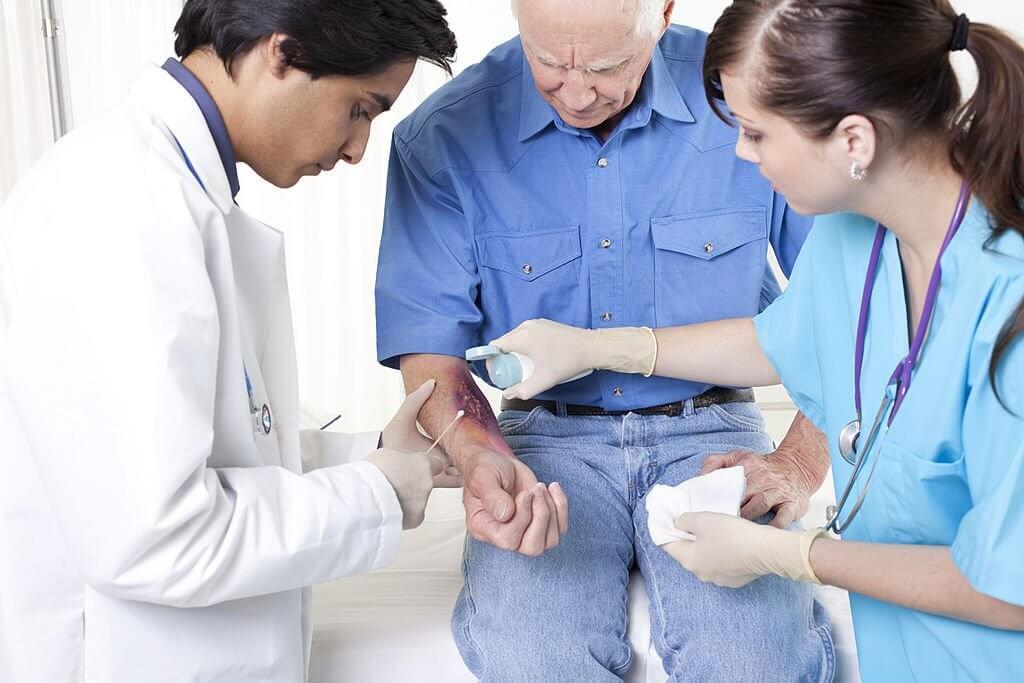News and Blogs
A Primer on Wound Culture Swab: Essential Facts & Guidelines

Wound infections significantly impair healing and can lead to serious complications. Culture swabs are a critical diagnostic tool to identify pathogens and guide treatment. But what is the best technique for optimal results? We review evidence comparing swab and tissue cultures, and provide recommendations for maximizing swab accuracy while avoiding risks and costs of biopsies. The goal is to elucidate an effective approach to utilize wound swab culture for optimal wound care.
What Is A Wound Culture Swab?
A wound culture swab is a diagnostic test that uses a sterile swab to collect a sample from an infected wound and send it to the laboratory for culture and analysis. The goal is to identify the specific bacteria or fungi causing the infection so that appropriate antibiotic therapy can be selected. First the wound is cleansed to remove debris before collecting the sample by swabbing over the infected area using a zigzag or circular technique. Swab cultures are as accurate as tissue biopsies for detecting most organisms and avoid the pain and complications of an invasive procedure. The sample is cultured aerobically and anaerobically to recover all potential organisms, including anaerobes which are common in chronic wounds. Results are usually qualitative, indicating which organisms are present, but can also be quantitative with a bacterial count for severe infections. Wound culture swabs provide critical information to clinicians about the pathogens present so that optimal antibiotic therapy can be initiated, wound healing can progress, and complications like sepsis can be avoided. They are an indispensable tool for proper wound management.
Should Wounds Be Cleaned Before Culturing?
The CDC guidelines recommend cleaning the wound with sterile saline or non-toxic soap prior to obtaining a culture. This helps remove debris and necrotic tissue which can contaminate the culture. Studies have shown that cleaning and debriding the wound provides a more accurate culture compared to swabbing over a non-cleansed wound. However, over-cleansing can also remove bacteria and make the culture falsely negative. The goal is to remove debris without disrupting biofilm.
What Is The Best Swabbing Technique?
Two common techniques are the Levine and Z-swab methods. The Levine technique uses a sterile swab rotated over a 1 square cm area with pressure for 5 seconds to express fluid. The Z-swab traces the entire wound bed in a Z-pattern without pressure. Studies show both techniques have similar recovery rates for common organisms like MRSA and pseudomonas. The Levine may be better for anaerobes while the Z-swab surveys more surface area. Using both techniques can provide a comprehensive assessment. Proper technique avoids contact with non-viable tissue and prevents cross-contamination.
Are Swabs Inferior To Tissue Cultures?
Tissue biopsy was once considered the gold standard but is costly and invasive. Recent studies show properly collected swab cultures have similar yields to tissue cultures in uninfected wounds. A Johns Hopkins study found swabs recovered anaerobes, gram positives, and total species at slightly higher rates than tissue cultures, though not statistically significant. For common organisms like MRSA, recovery was identical. Thus, swab cultures appear equivalent if done correctly after debridement. Swabs are faster, cheaper, and less painful.
Should Anaerobes Be Cultured?
Anaerobes like Bacteroides comprise up to 22% of organisms in chronic wounds. They are rarely captured by aerobic cultures. Using an anaerobic transport system is critical for recovery. Anaerobic swabs had higher yields compared to aerobic swabs or tissue cultures in multiple studies. Adding anaerobic cultures provides a more complete profile, which is useful since some anaerobes like Bacteroides are virulent. Ignoring anaerobes can miss key pathogens.
Is Quantitative Culture Helpful?
Quantitative culture provides colony counts to distinguish contamination from infection. Counts above 10^5 CFU/g are considered diagnostic for infection. However, clinical correlation is still important as contamination can occur. Quantitative culture is also more time consuming and expensive. Some studies show no difference in antibiotic selection or wound healing between quantitative and qualitative cultures. Qualitative cultures accurately identify causative organisms in most cases. Quantitative cultures can be considered for recurrent or chronic infections.
In summary, properly collected wound swab cultures provide results comparable to tissue biopsies. Swabbing over the cleansed wound bed with good technique and using anaerobic systems allows comprehensive assessment. Quantitative culture offers added information in select cases but is not always required. Overall, swab cultures provide a simple, inexpensive and effective method for guiding wound management.
Click to View → Mantacc Mediums & Transport Swabs
References
Smith ME, Robinowitz N, Chaulk P, Johnson K. Comparison of chronic wound culture techniques: swab versus curetted tissue for microbial recovery. Br J Community Nurs. 2014 Sep;Suppl(9 0):S22-6. doi: 10.12968/bjcn.2014.19.Sup9.S22. PMID: 25192558; PMCID: PMC4267254.
Related Posts
Everything You Need To Know About Aerobic Culture Swabs






